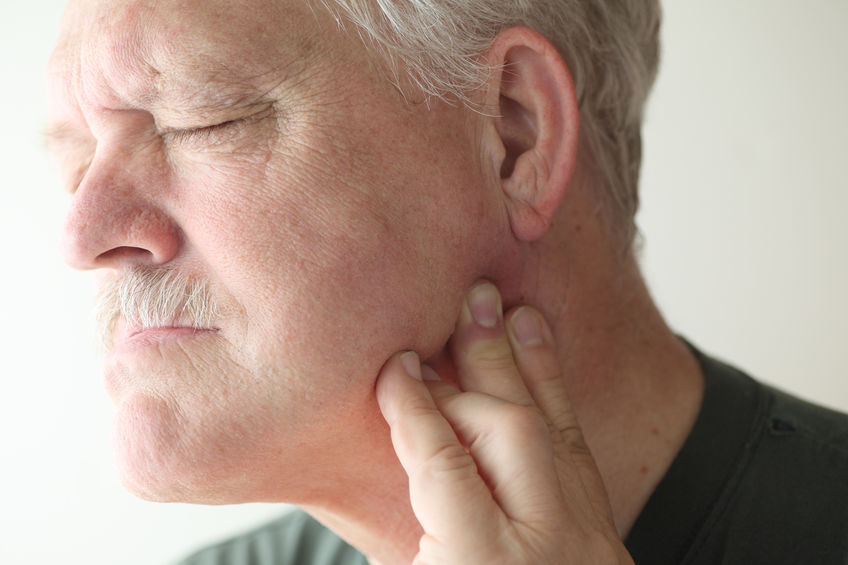 The joint that connects the jaw to the skull is known as the temporomandibular joint. This joint acts like a sliding hinge that facilitates opening and closing of the mouth. Free movement of the jaw up and down or side to side enables you to chew food, talk, or even yawn. In a situation where this joint becomes damaged or injured, it results in a localized pain disorder referred to as temporomandibular joint syndrome (TMJ). The smooth movement of the jaw can be disrupted when the disc or cartilage is displaced, muscles are irritated, or if you have arthritis. In this article, we will be discussing five symptoms of a temporomandibular joint syndrome that can be treated with chiropractic adjustments and how to manage the pain.
The joint that connects the jaw to the skull is known as the temporomandibular joint. This joint acts like a sliding hinge that facilitates opening and closing of the mouth. Free movement of the jaw up and down or side to side enables you to chew food, talk, or even yawn. In a situation where this joint becomes damaged or injured, it results in a localized pain disorder referred to as temporomandibular joint syndrome (TMJ). The smooth movement of the jaw can be disrupted when the disc or cartilage is displaced, muscles are irritated, or if you have arthritis. In this article, we will be discussing five symptoms of a temporomandibular joint syndrome that can be treated with chiropractic adjustments and how to manage the pain.
- Stiff or Sore Jaw Muscles
The muscles that facilitate the movement of the jaw up and down or side to side may become spastic or dysfunctional. Chiropractic adjustments usually target the lateral pterygoid, masseter, medial pterygoid and the temporalis muscles to help restore the muscles around the affected joint. Chiropractors may use spinal adjustments to help ease muscle tension in the neck. This technique is used to improve the responses between your brain and the rest of the body.
- Extreme Jaw Pain
The degenerative joint disease of the temporomandibular joint and osteoarthritis are some of the major causes of TMJ pain. It is a wear and tear form of arthritis that occurs when the joint surfaces degrade over time, changing their shape and appearance. TMJ patients are provided with a safe, non-addictive and non-invasive alternative to over the counter pain medication or prescription opioids that are commonly prescribed to help them manage their pain. Chiropractic adjustments improve the function of both the nervous system and the affected joint by reducing joint misalignments and restrictions in the spine.
- Popping or Clicking in the Jaw
Clicking or popping sound in the jaw usually occurs when opening or closing your mouth. This symptom gives you the first clue that the neck pain or headaches you experience around the base of your skull and temple originate from your jaw. Displacement of the cartilaginous disc has a huge impact on the overall function of the temporomandibular joint. The gentle adjustments performed by chiropractors help to reset the TMJ properly by minimizing the displacement at the joint. The popping noise that occurs in patients with TMJ syndrome happens when the condyle snaps over and back across the displaced cartilaginous disc cushioning the joint.
- Bite Changes
Some patients may report that their teeth do not hold together every time they are biting food. This bite alteration makes it difficult to chew certain types of food because it interferes with your eating habits. For some patients, TMJ syndrome is caused by tooth grinding, which is a manifestation of stress. Chiropractors may recommend some lifestyle changes to their patients to help them manage their stress. Some of the ways you can manage this symptom include performing stretching exercises that help align your jaw and eating a healthy diet.
- Hearing Difficulties
A feeling of fullness in the ear, swallowing difficulties and dizziness are less frequently reported but usually occur in many patients with TMJ syndrome. There is a direct connection between your middle ear and the temporomandibular joint. When the disc is misaligned, it increases the pressure on the nerves in the joint and the Eustachian tube, which connects your nasal and mouth passages with the esophagus. As a result, it may block the Eustachian tube leading to hearing loss. It can also cause inflammation along the passage from your temporomandibular joint to your ear thus causing an earache, vertigo or tinnitus.
Benefits of Chiropractic Care for TMJ
Patients who are struggling to manage their symptoms and have tried various methods to treat their TMJ may benefit significantly from chiropractic care. Not only does it help alleviate the pain but also improves the function in your nervous system. It involves no addictive medications because it is a non-invasive form of treatment. Furthermore, the techniques used are gentle enough to be used on both children and adults.
There are many ways you can manage your TMJ symptoms at home. Many chiropractors recommend lifestyle changes as one of the best ways to treat the symptoms of the temporomandibular joint syndrome. Some of the effective home remedies include applying ice packs, eating softer foods, learning stress-reducing techniques and avoiding extreme jaw movements. You can always talk to your chiropractor to determine a method that works best for your TMJ symptoms.
